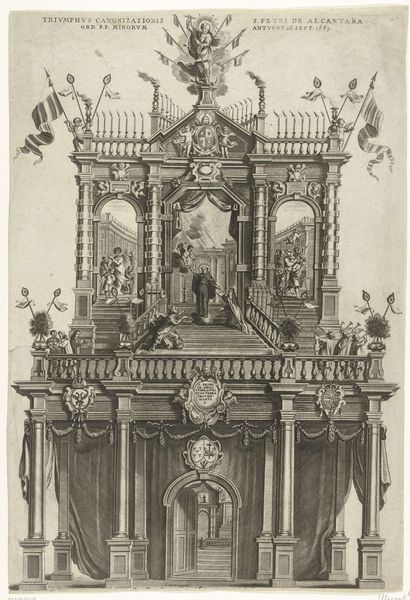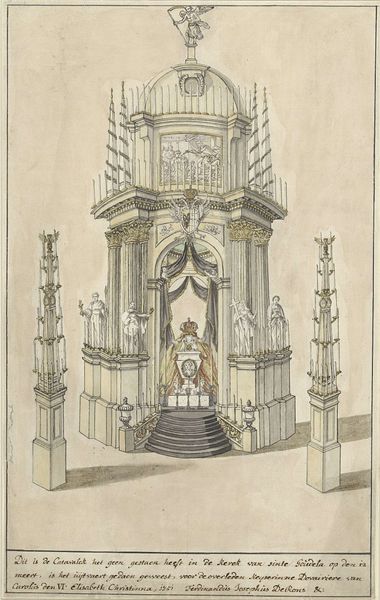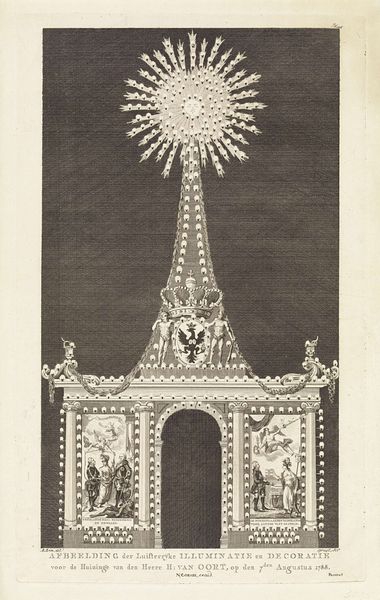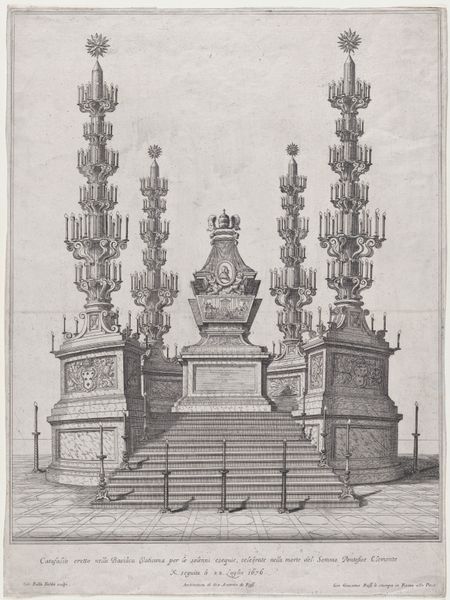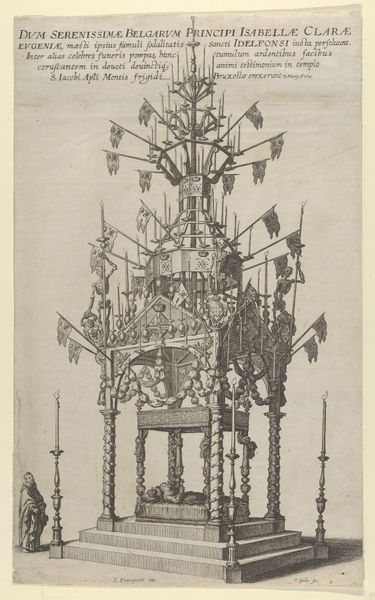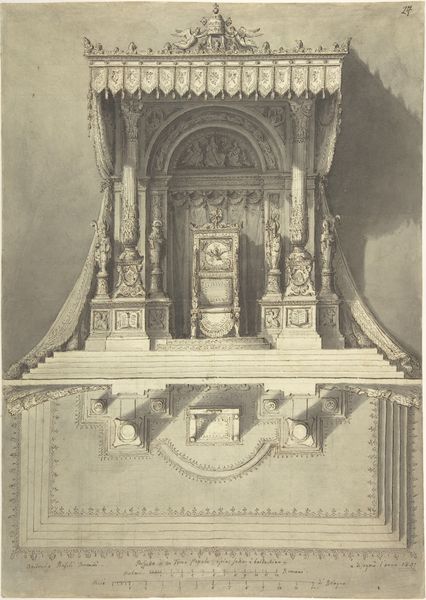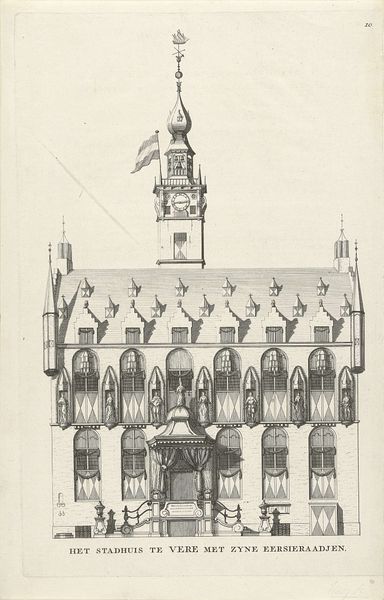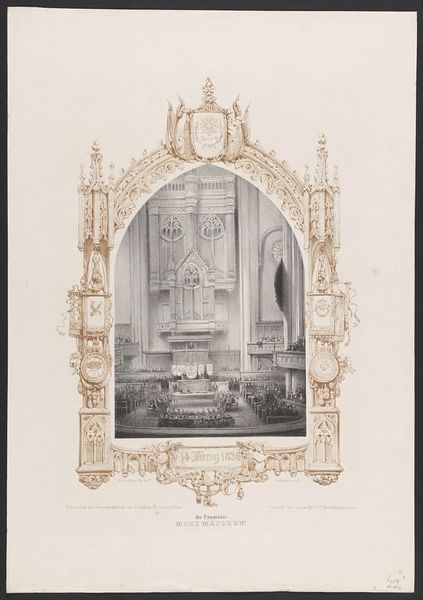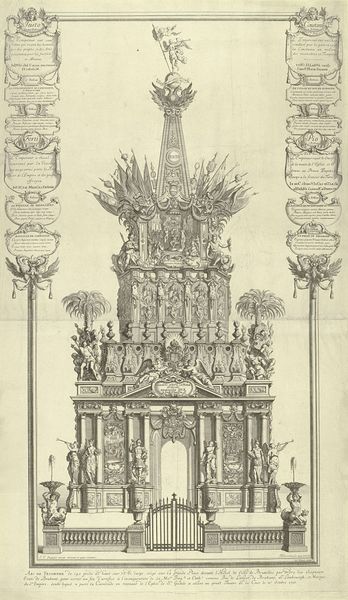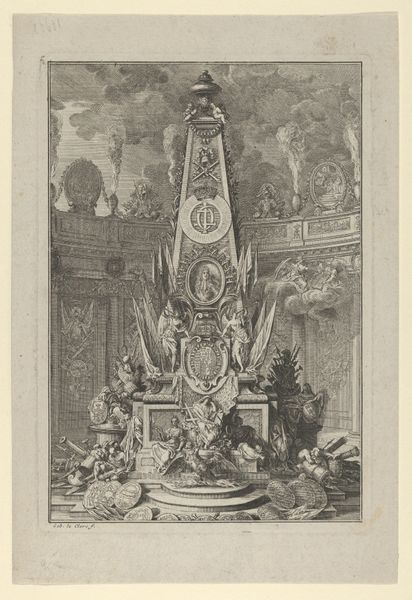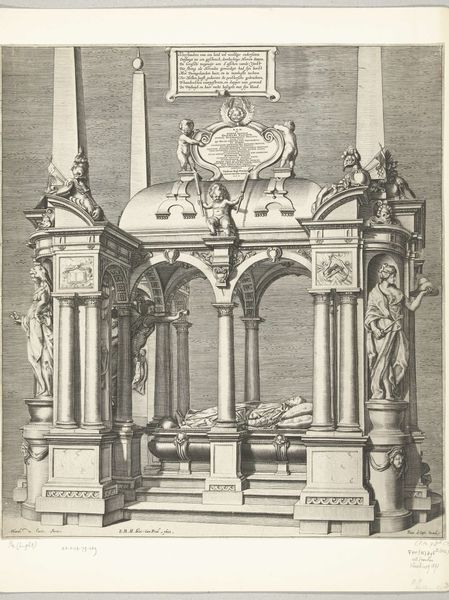
Mausoleum opgericht in Westminster Abbey voor de overleden koningin Maria Stuart, 1695 1695
0:00
0:00
print, engraving, architecture
#
portrait
#
baroque
# print
#
pen illustration
#
old engraving style
#
line
#
history-painting
#
engraving
#
architecture
Dimensions: height 290 mm, width 187 mm
Copyright: Rijks Museum: Open Domain
Curator: This is a print from 1695 titled "Mausoleum erected in Westminster Abbey for the deceased Queen Mary Stuart." It’s by an anonymous artist, held at the Rijksmuseum. It looks incredibly ornate, almost like a stage set. What grabs your attention first? Editor: The overwhelming amount of detail, I suppose. All the crowns and sculpted figures feel deliberately excessive, but how does that connect to Mary Stuart? What’s the message behind all of this ornamentation? Curator: Well, consider the medium: an engraving, a relatively reproducible and therefore accessible format. Think about who would have commissioned this. Was it a private expression of grief or something intended for wider consumption? This mausoleum, whether real or imagined, is being presented as a symbol of power, and more importantly, legitimate succession. Notice how the materials depicted—stone, precious metals—are rendered meticulously. Is it to remind us of actual riches or the *idea* of richness and status? Editor: So it's less about mourning a person and more about constructing a narrative around power? The emphasis is on displaying authority, perhaps solidifying the Stuart legacy after her death, instead of focusing on, say, the personal qualities of the deceased. Curator: Exactly. The visual language itself—the repetition of symbols, the architectural scale—suggests a machine for producing meaning. Do you think there's an inherent tension between the purported spirituality of a mausoleum and the blatant display of wealth? Does the print flatten or elevate it? Editor: It does feel contradictory now that you mention it. The engraving’s almost clinical depiction of luxury feels almost critical, even though that may not have been the intention. I never considered how the very act of reproduction in print could itself be a commentary. Curator: Considering art from a materialist angle gives you tools to start questioning seemingly obvious symbolism and thinking about the process and context of its making. Editor: I will definitely consider how social status may dictate art and ways of consuming it.
Comments
No comments
Be the first to comment and join the conversation on the ultimate creative platform.
